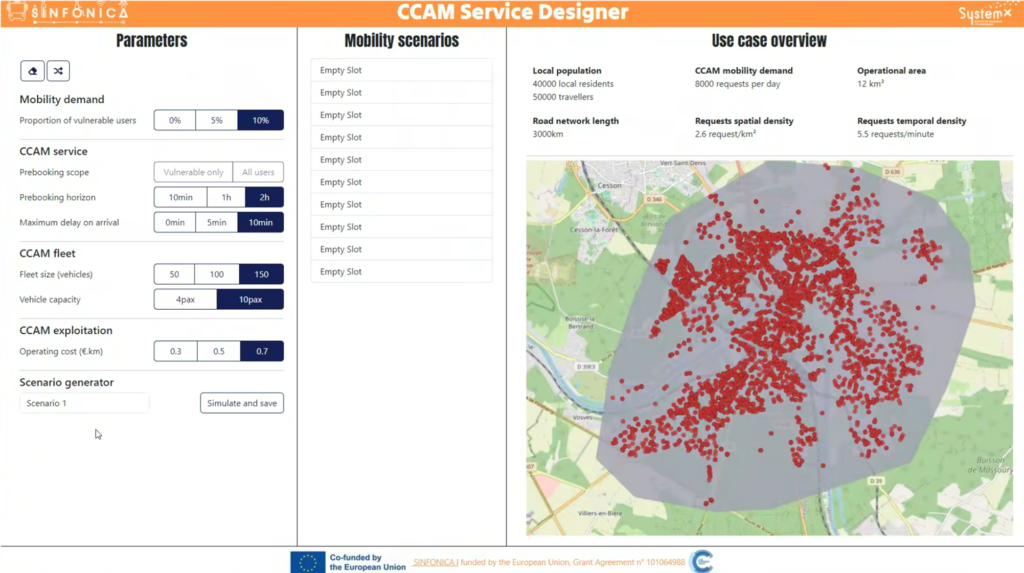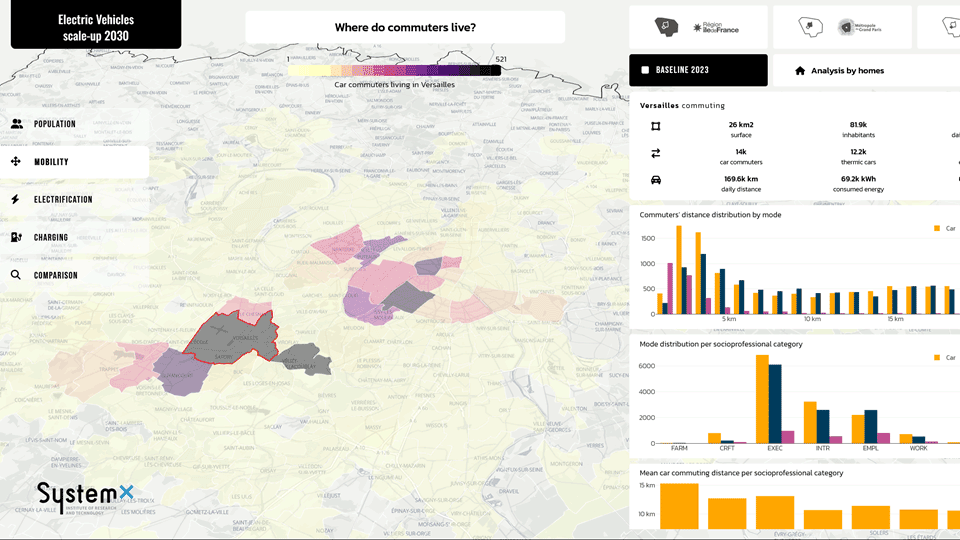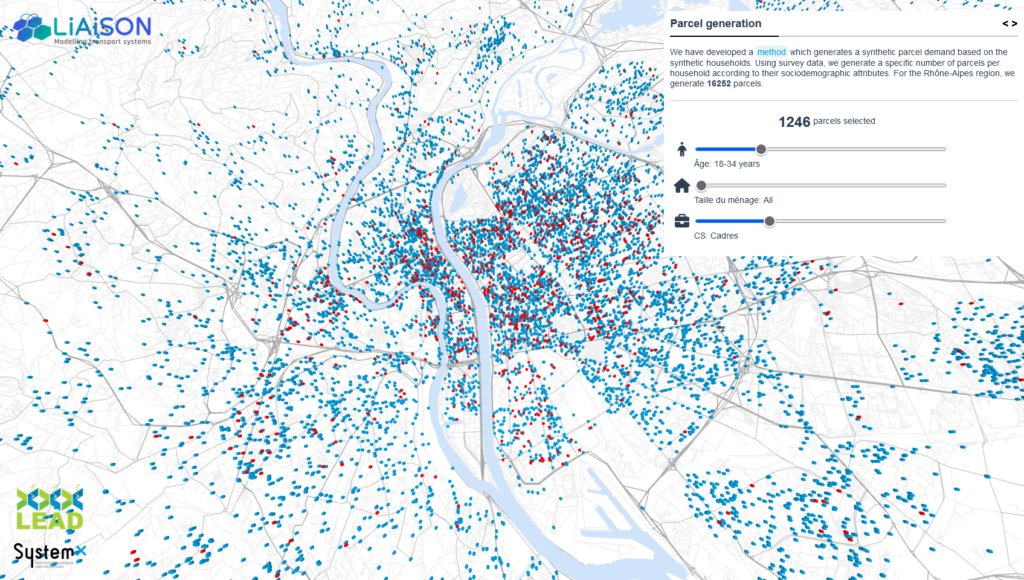CCAM
Connectivity and automation: how to exploit and impact ?
CCAM (Connected, Cooperative and Automated Mobility) service design innovation is essential if large-scale services are to be designed to meet various needs. Taking into consideration mobility issues relating to the inclusiveness of vulnerable populations are crucial to creating a transport system that is fair and accessible to all. Research highlight the importance of taking into account the specific needs of various groups, such as people on low incomes, senior citizens, migrants, people with disabilities and women.
The traditional approach based on the needs of a ‘reference person’ must be abandoned in favour of inclusive design that takes account of the diversity of users[1]. Innovation must also focus on improving the accessibility, safety and efficiency of transport systems, while ensuring that these solutions are sustainable and environmentally friendly.
We are developing a tool to help design fleets of autonomous vehicles. It can be used to configure realistic demand in a given area and take account of the challenges of inclusiveness. It offers technical and economic parameterisation methods for sizing a fleet of vehicles and operating methods. This tool enables a priori analysis of the service and economic performance of this mode of transport in a given area.


SINFONICA is a European project that aims to facilitate the shift toward innovative, smart mobility concepts in an inclusive and equitable way, through the adoption of an approach that always put users and their needs at the centre.
https://sinfonica.eu/
Electric Mobility
What are the scenarios for improving Vehicles and charging stations: how could they scale up?
Planning energy transitions requires sophisticated approaches and an ambitious multi-industry approach. It involves integrating complex dynamic phenomena, such as the quantification and spatial distribution of recharging needs, requiring close coordination between public and private players. The challenges are many: anticipating supply and demand, balancing consumption, production and energy storage, investment and impact on public space.
The success of this transition will depend on the ability to simultaneously address the energy, environmental, social (acceptability and equity) and economic (inclusivity of services) challenges.
We develop a territorial digital twin that offers an unprecedented understanding of the dynamics of electric mobility, facilitating precise and adaptive planning. It consolidates a knowledge base on mobility behaviour, making it possible to understand specific needs and guide energy transitions. The tool analyses motives, distances, recharging needs and types of journey to improve the energy mix.

Urban logistics
How to design decarbonation strategies with limited data?
Last-mile logistics represents a field of investigation…
…
The success of this transition will depend on the ability to simultaneously address the energy, environmental, social (acceptability and equity) and economic (inclusivity of services) challenges.
LIAISON is a territorial digital twin that offers an unprecedented understanding of the dynamics of electric mobility, facilitating precise and adaptive planning. It consolidates a knowledge base on mobility behaviour, making it possible to understand specific needs and guide energy transitions. The tool analyses motives, distances, recharging needs and types of journey to improve the energy mix.

Rail systems
What are the scenarios for improving rail mobility in the regions?
Last-mile logistics represents a field of investigation…
…
The success of this transition will depend on the ability to simultaneously address the energy, environmental, social (acceptability and equity) and economic (inclusivity of services) challenges.
LIAISON is a territorial digital twin that offers an unprecedented understanding of the dynamics of electric mobility, facilitating precise and adaptive planning. It consolidates a knowledge base on mobility behaviour, making it possible to understand specific needs and guide energy transitions. The tool analyses motives, distances, recharging needs and types of journey to improve the energy mix.
